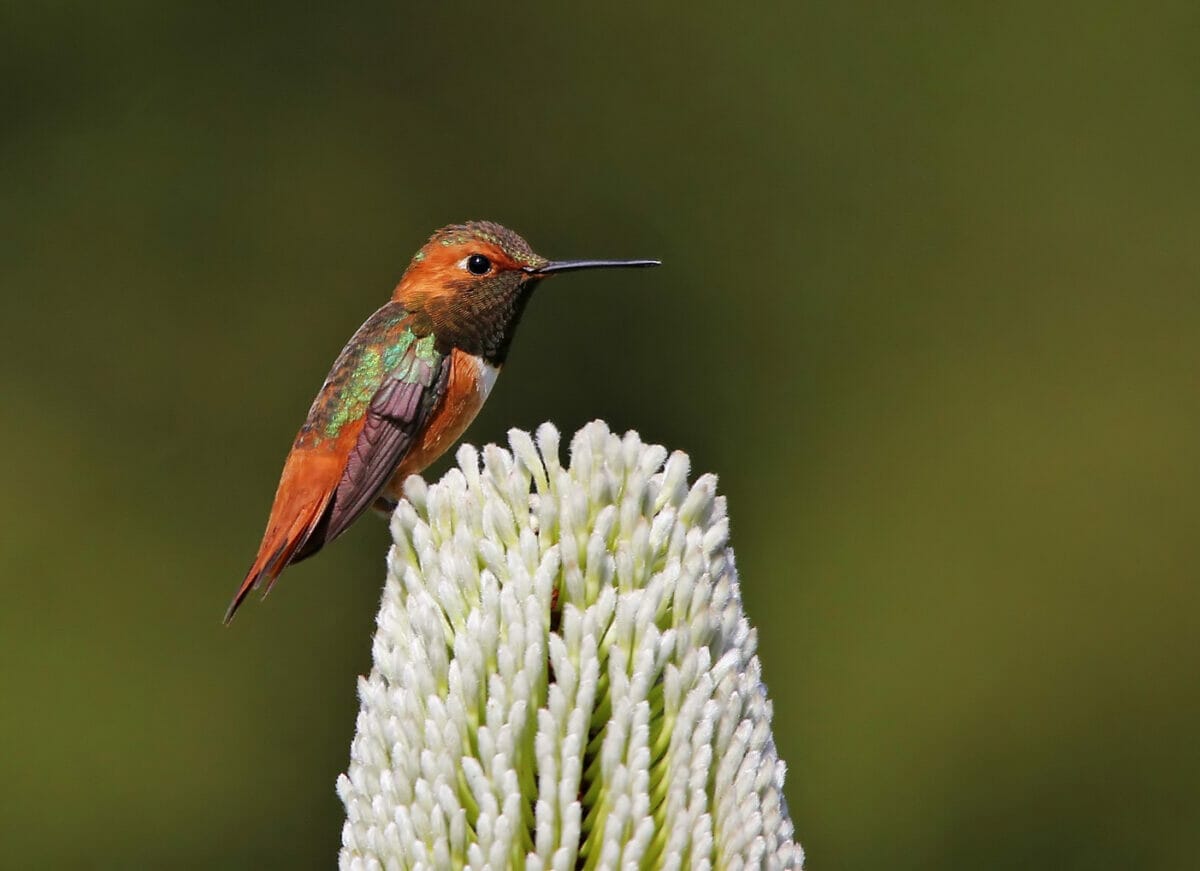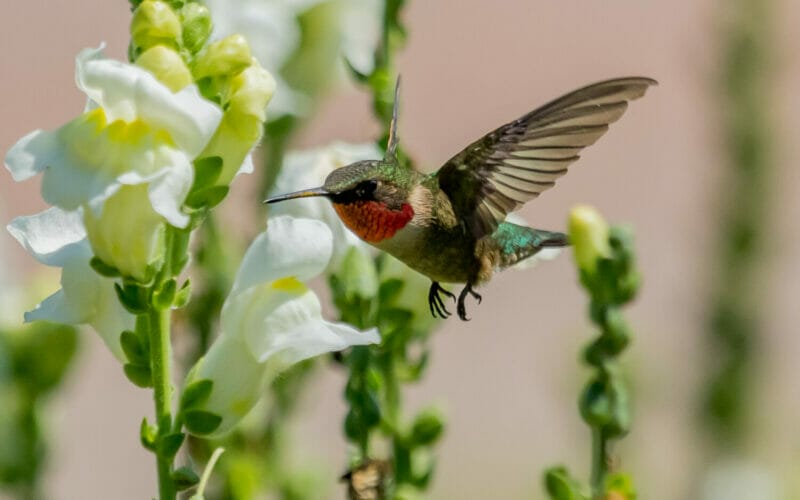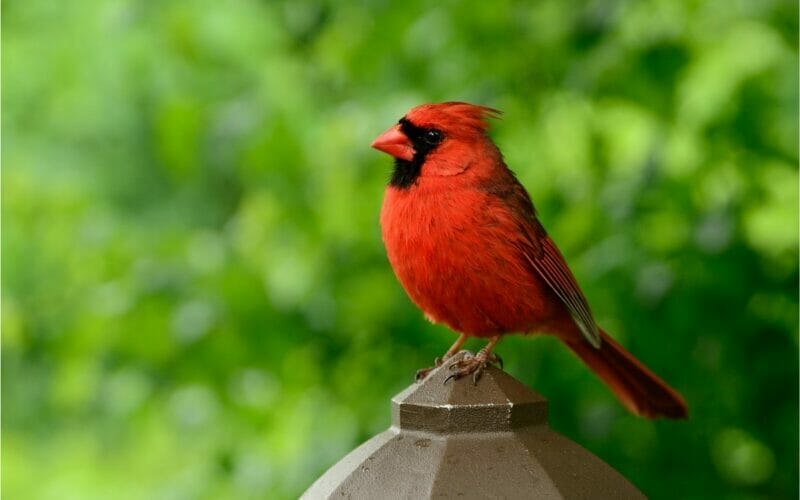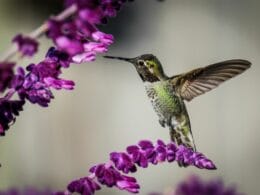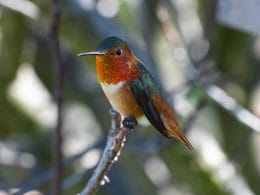These intriguing, brightly colored birds may be small, but they have a BIG appetite. Some species can beat their wings up to 80 times per second, so it’s no surprise that they need plenty of food to keep themselves fired up! Want to learn more about the hummingbird diet?
Keep reading to find out what these little birds eat, how often they eat, and how you can encourage more into your yard.

What are hummingbirds?
The humble Hummingbird, named after the noise it makes in flight, is a truly remarkable species of bird native to America. There are approximately 361 species of hummingbird, and they’re thought to be the smallest migrating bird in the world.
The hummingbird is the only species of bird that can fly backwards, and even upside down! While hovering, the hummingbird will flap its wings between 10-80 times per second! The fastest recorded rate is approximately 80 beats per second, a record set by the Amethyst Wood Star Hummingbird.
Thanks to these incredible stats, the hummingbird is one of the most maneuverable birds on the planet.
Where do hummingbirds live?
Hummingbirds can be found in the Americas, but only eight species breed in the U.S. Other species can be found across South America, Central America, and Caribbean countries.
In the US, the most common hummingbird is the Ruby-throated Hummingbird (Archilochus Colubtris). This hummingbird is decorated with a dash of green and red and is between 7-9 cm in size.
Species of hummingbird
Here are a few of the rarer hummingbirds to visit the U.S.
Rivoli’s Hummingbird (Eugenes fulgens)


This is a large hummingbird and it was suited to its previous name of the Magnificent Hummingbird. It is not often seen at feeders preferring moutainous forests and darker canyons.
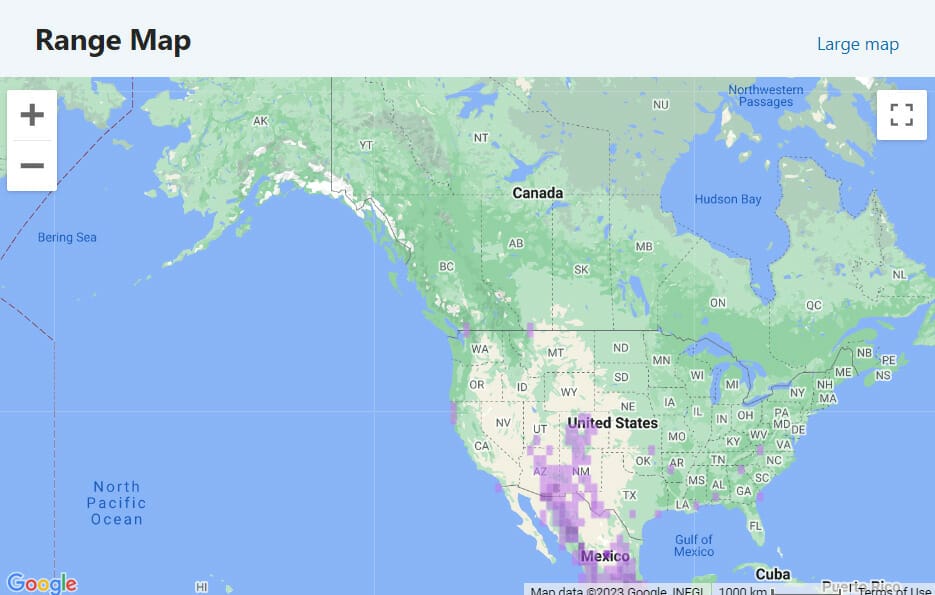
Rivoli’s Hummingbird is infrequently seen in the southern states of Arizona, New Mexico and into Colorado. According to eBird records there have even been sightings as far north as Montana and Washington.
Costa’s Hummingbird (Calypte costae)
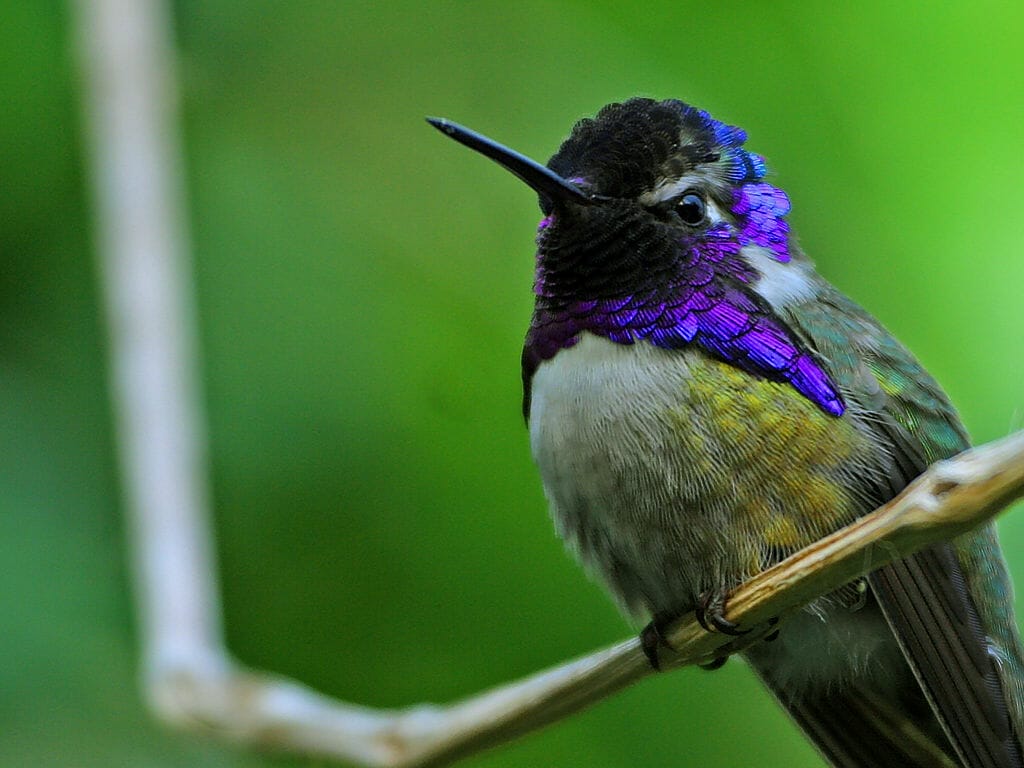

A small hummingbird that migrates to south western America and up the Pacific coast, reaching as far north as the south coast of Alaska. After breeding it becomes a bit nomadic and will visit feeders.

Violet-crowned Hummingbird (Leucolia violiceps)
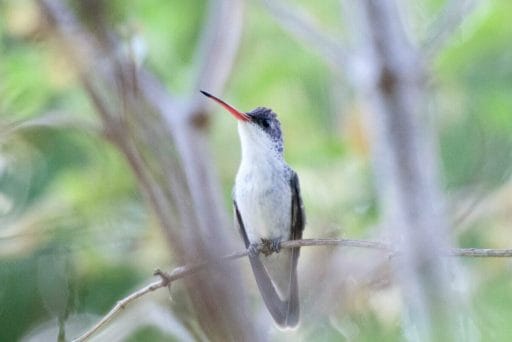
A rarely seen hummingbird in the U.S., visiting southern Texas, New Mexico, Arizona and California. It is particularly striking with a black tipped vivid red bill. When visiting America, it may be seen at garden feeders.
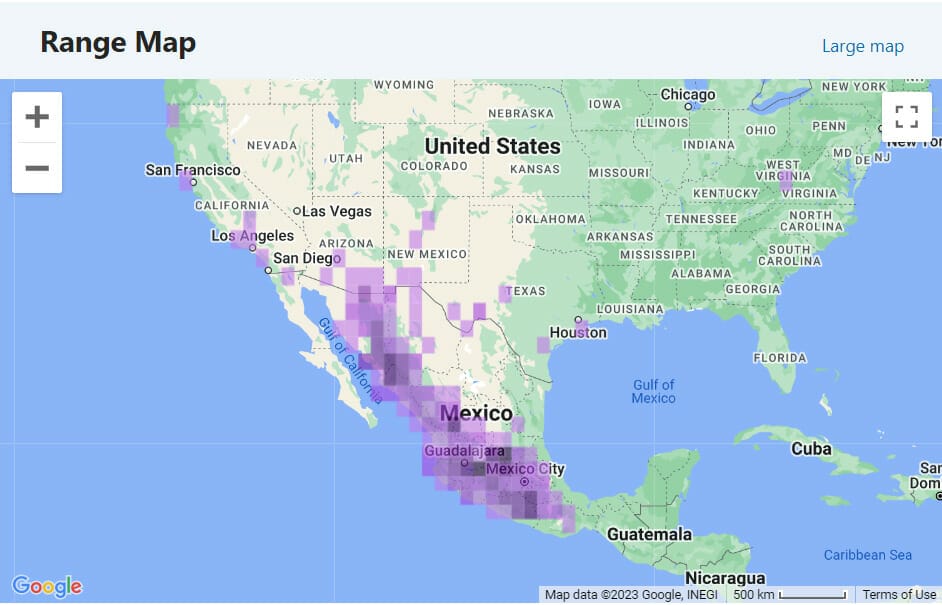
The hummingbird diet
Although hummingbirds have a pretty diverse diet, they have a special preference for nectar. Here are the most common foods hummingbirds enjoy eating:
Nectar
Nectar is the hummingbird’s favorite food. Nectar is found in abundance and is usually sourced from sugar water solutions or the appropriate flowers. Nectar is high in sucrose, which gives hummingbirds the energy they need to live their fast-paced, energetic lives.
Nectar is also a liquid that keeps hummingbirds hydrated. These little birds don’t typically drink water from other sources, which makes it a very valuable food in their diet. Although nectar keeps hummingbirds hydrated and loaded with energy, it doesn’t offer them enough protein, or other vitamins and minerals.
This is why hummingbirds don’t just rely on nectar – they must also eat an abundance of other foods to keep them fit and healthy.
DIY nectar
Want to encourage hummingbirds into your yard? Why not make your own nectar? Mix four cups of water with one cup of white, refined sugar, and stir until dissolved. Leave this in your yard, and see if you can spot the hummingbirds! If you make extra nectar, it can be stored in the refrigerator and added to the feeder when required.

Fruit
Fruit is another popular choice for the hummingbird. Oranges, apples, pears, and berries are known to entice hummingbirds, but only if they’re peeled or exposed. This is important so they can dig their long bills straight into the flesh.
Insects
Hummingbirds feast on a variety of small insects, which are one of the most essential food sources for these little birds. They enjoy eating mites, gnats, mosquitoes, fruit flies, ants, and aphids, to name a few! They may also eat insect eggs and larvae, and are particularly fond of spiders.
These insects give the hummingbird a generous dose of salts, protein, and fat, which cannot be found in nectar alone. Therefore, they essential for all hummingbirds, but they’re particularly important for the young, who need a delicate balance of nutrients to grow strong.
Sand and ashes
Believe it or not, some species also consume sand and ash in small quantities. Sand and ash provide hummingbirds with minerals and salt, but it’s not enough to meet their daily requirements. It’s also possible that hummingbirds do this to find the insects that live inside the material.
Sap
If hummingbirds struggle to find nectar, they’ll set out in search of sap. Sap can be extracted from trees, and hummingbirds usually drink it from the wells drilled out by woodpeckers. Although tree sap isn’t as sweet or fragrant as nectar, it will still give hummingbirds enough sucrose to meet their energy requirements.

Pollen
Although hummingbirds don’t consume pollen directly, they’ll extract plenty when they drink nectar from flowers. If some of this pollen is consumed, it will give the hummingbird a small dose of protein. However, most hummingbirds consume less than 10% of the pollen from nectar, which makes it an unreliable source of nutrients for these little birds.
How often do hummingbirds eat?
Unsurprisingly, hummingbirds have a very high metabolism, which means they must eat as often as they can. The average hummingbird will feed every 10-15 minutes, and may visit as many as 2,000 flowers per day!
The only exception to its constant ingestion is when the hummingbird migrates. This flight can take as long as 20 hours, and it’s a non-stop flight across the Gulf of Mexico! For a little bird that eats every 15 minutes, it goes without saying that the hummingbird needs a pretty big feast before it sets off on its migratory flight. Before they migrate, the average hummingbird will consume around three times its body weight in food before it sets off.
Do hummingbirds visit feeders?
Yes! If your feeder contains the right foods and nutrients for the hummingbird, your yard may become a hotspot for these little wonders. If your feeder is enticing enough (and a reliable source of food), hummingbirds may visit it as often as every 30 minutes. Once they become regular visitors then the chances are they will return year after year.
Want to encourage more hummingbirds into your yard? Here are a few tips and tricks you can use to encourage more frequent visitors:
- use different shaped feeders
- place feeders away from breezes and direct sunlight to keep nectar fresh
- position your feeders near other fresh flowers to help hummingbirds find them
- also provide natural food sources such as insects, fruit juices, tree sap, and pollen
- fit your feeders with insect guards or traps to prevent competition
- do not use oil or sticky products on your feeders, as they can stick to their feathers and make it difficult for them to fly or preen
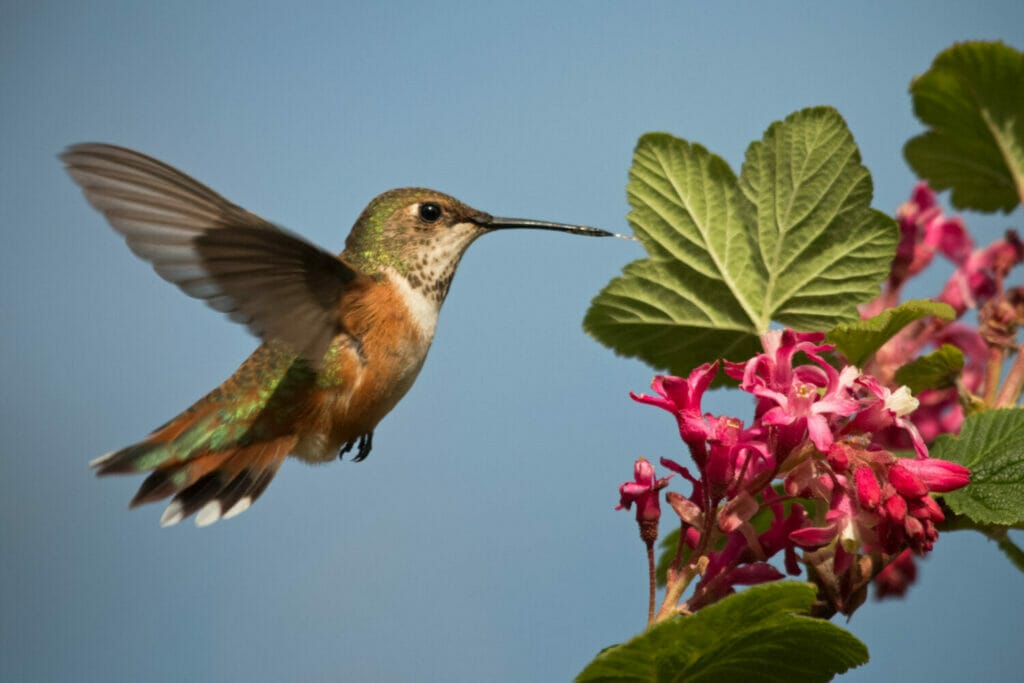
Final Thoughts
Hummingbirds are one of nature’s finest birds – and maybe one of its hungriest. These little birds eat every 15 minutes, and feast on a variety of things, including nectar and insects.
So, keep these feeders topped up to encourage these speedy little birds into your yard!
FAQ
Like a lot of birds, hummingbirds spend the night in a tree, sheltering on a suitable branch. During breeding, the female will sleep on the nest.
No, they do not. If you want to attract them to your garden then special nectar feeders are the best way. Once they start visiting, they are likely to return every year.
Hummingbird feeders can be put out any time within 2 weeks of their time of arrival. That might be trial and error at first, but as they revisit the same area each year at the same time then you will have the information for the next year.




